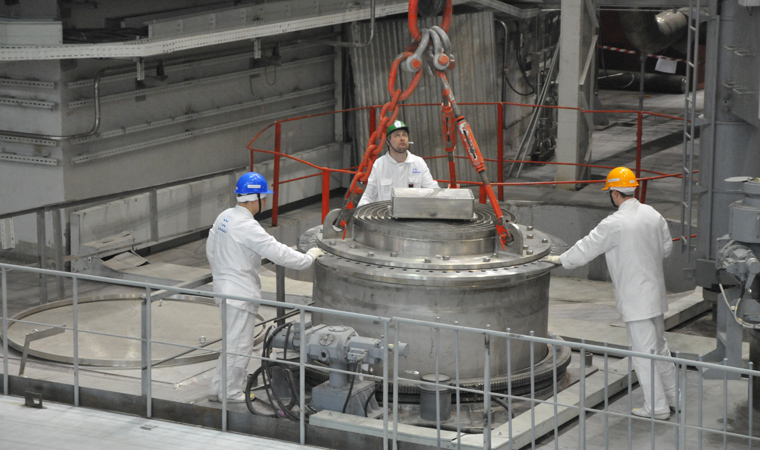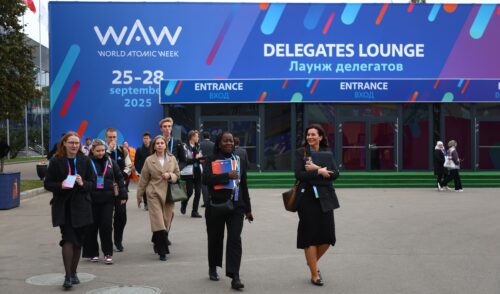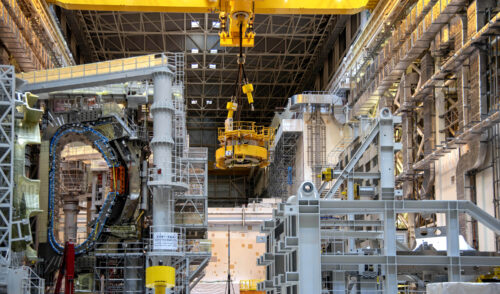
Life Started
back to contentsFuel loading of unit site started on December 25, 2013. The fuel assemblies are located in a special building warehouse for fresh fuel. Though the license for power unit operation had been received back in December, a special permission of Russian nuclear regulator Rostechnadzor was needed to begin the fuel loading and pre-startup tests. It was obtained at the end of January.
Fuel loading will last for three months. While loading, a minimal fuel mass necessary for self-sustaining controlled nuclear reaction will be gained. This beginning of reaction is called critical reactor. The next key-step will be minimum controlled power level. While doing physical start-up all necessary system tests and physical measurements will be done.
“Successful fulfillment of all stages of the BN-800 reactor physical start-up program, and further power start-up of unit 4 are our main tasks in 2014”, – said Mikhail Bakanov, the Beloyarsk NPP Director.
The process of fuel loading into this type of reactor is more complicated than that of VVER type due to design features, primary coolant and other factors. This stage will take about 3 months. The next stage is power start-up, passing to experimental-industrial production of the unit. It is planned to be completed by the end of 2014”, – said Gennady Ershov, the head of chief engineers of projects department of the VNIPIET –SPBAEP branch.
Beloyarsk NPP started working in April 1964, being the first NPP in Russia’s big atomic energy and the only one with different types of reactors on site. The first units with AMB-100 and AMB-200 thermal neutron reactors were shut down due to fuel exhaustion. The one operating is the only in the world industrial level fast breeder reactor BN-800. The unit with BN-800 is on the physical start-up stage now. Fast breeder units are meant to expand fuel base of atomic energy and minimize radioactive waste due to organization of a closed nuclear fuel cycle.




